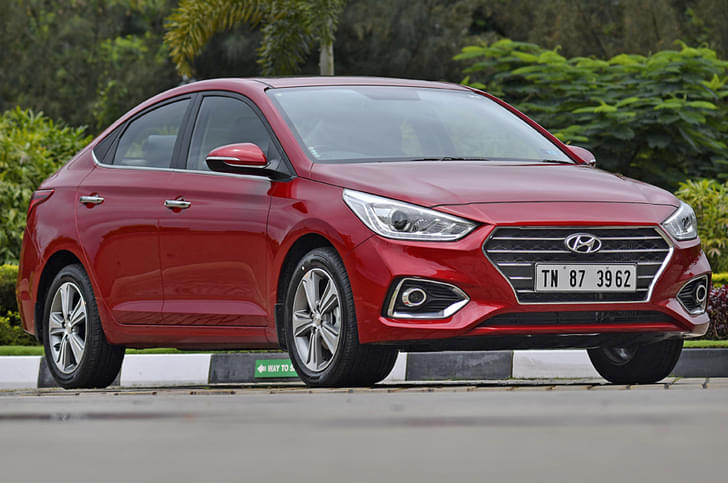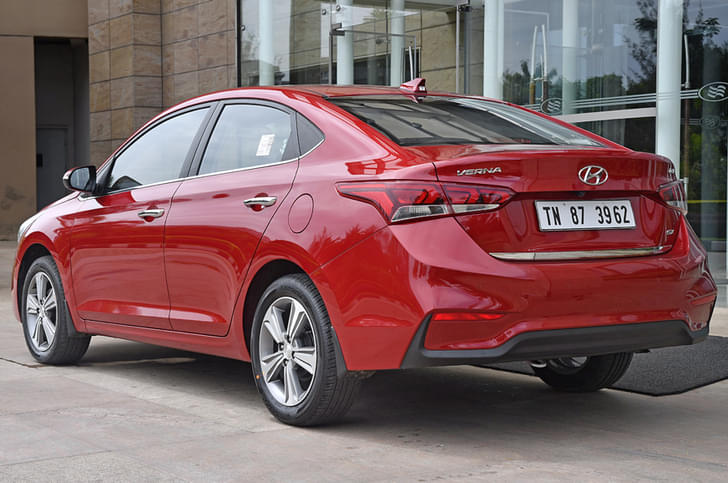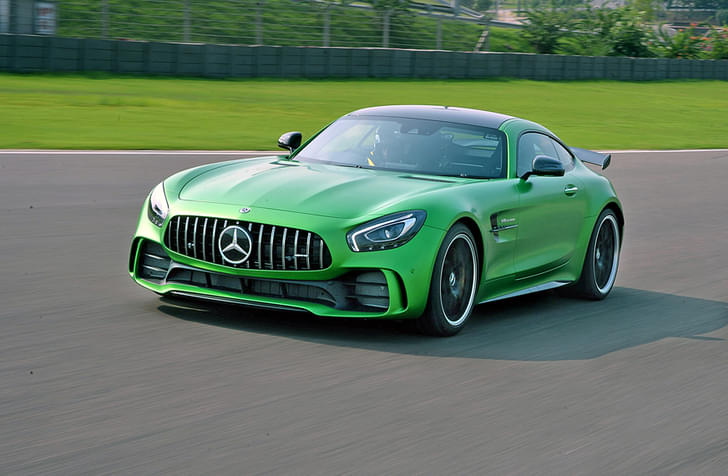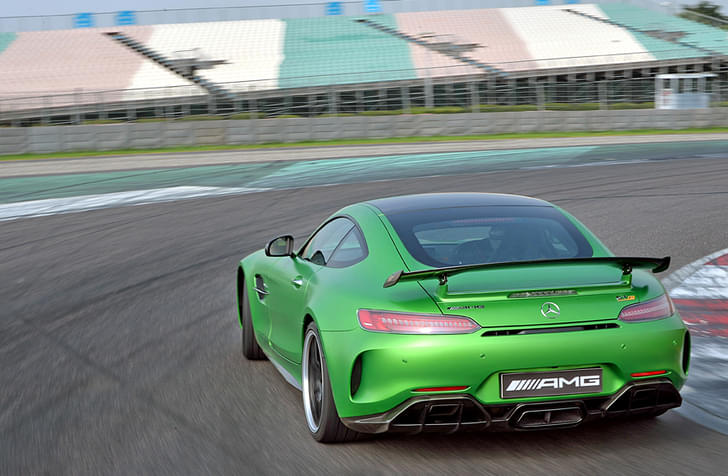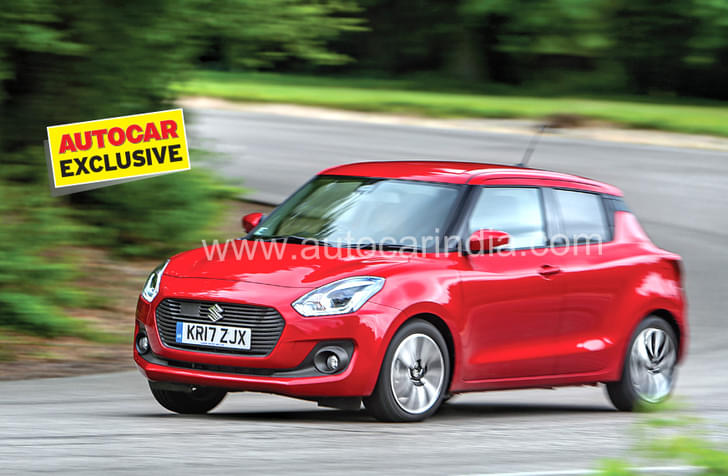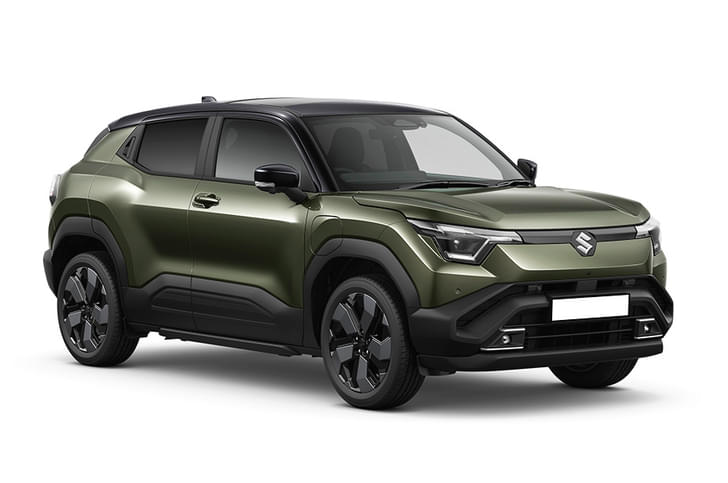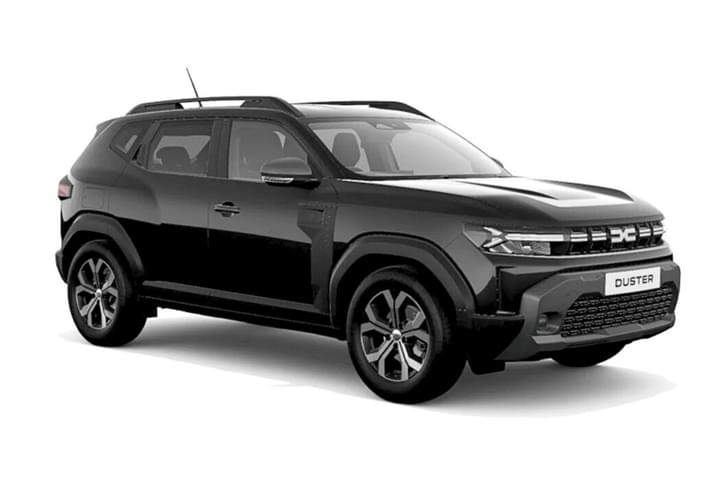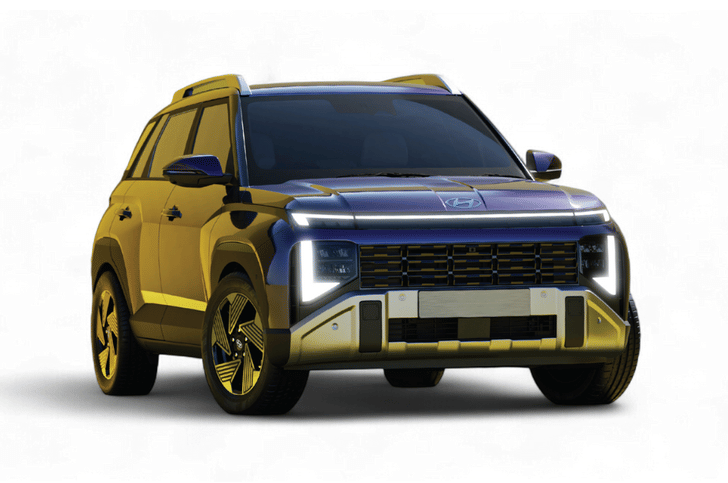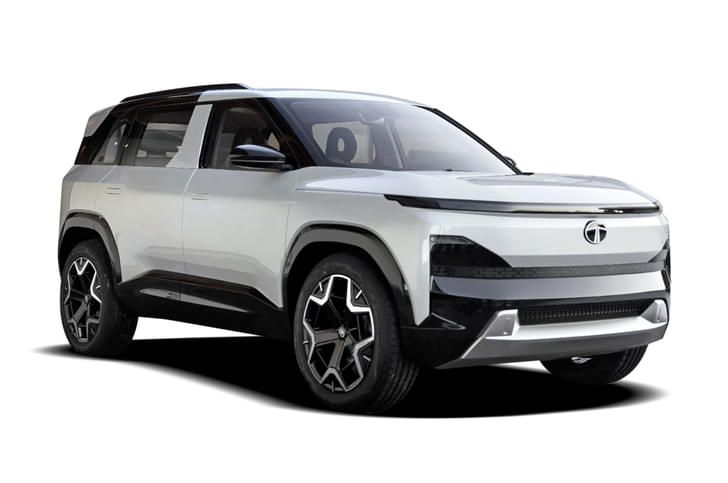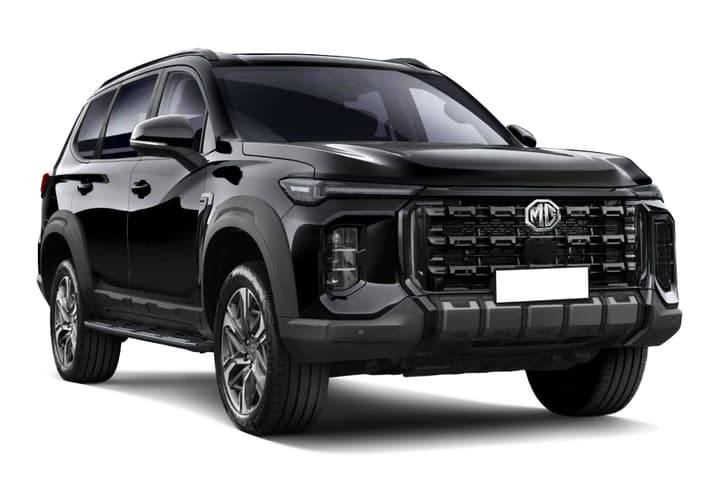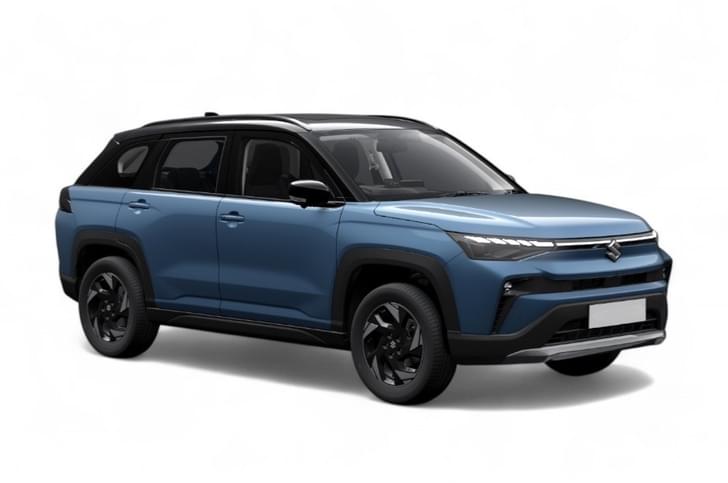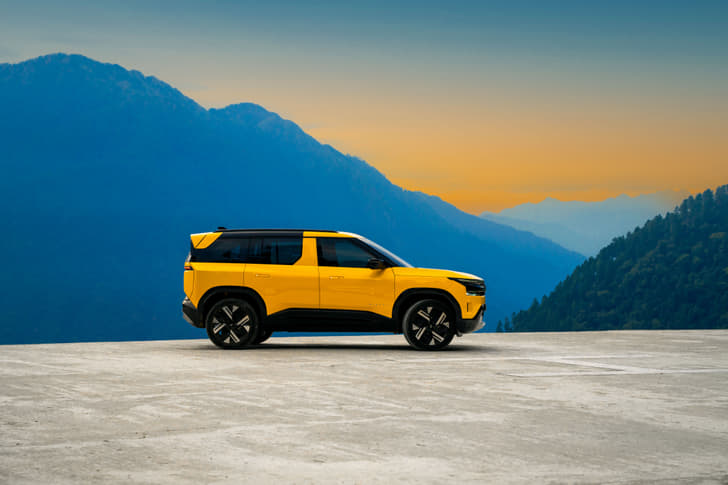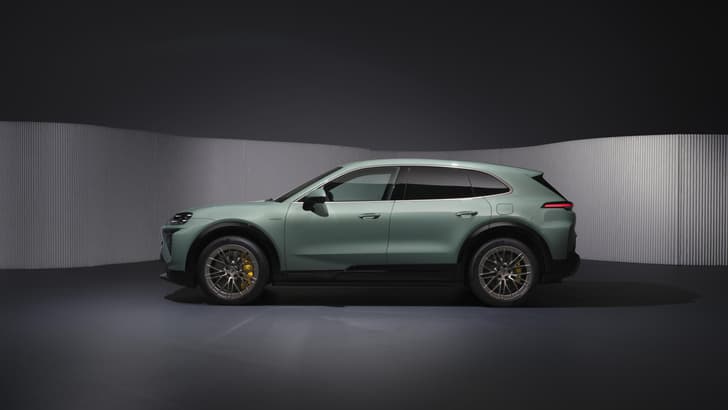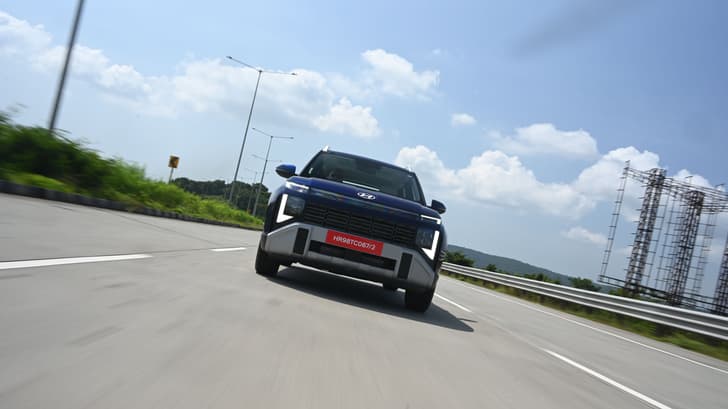Economies of scale, more and more products on common platforms, and fewer gaps in model ranges is the mantra in the capital-intensive car business where survival depends on volumes. Jaguar Land Rover – which sold just under 60,000 units, a mere 25 percent of some of its rival German luxury brands – knows this only too well and has upped the ante with a furious roll out of all-new products in new segments of the market.
Jaguar’s model range has been fleshed out with a successful foray into the SUV space that was traditionally the preserve of sister brand Land Rover. Well, Land Rover won’t be making sedans, but the iconic off-roader brand is seizing any niche it can find within its own portfolio.
The Velar is the latest addition to the Range Rover…range, and it slots neatly into the wide gap between the Range Rover Sport and the Evoque. But the Velar isn’t just another model, it’s a new direction for Land Rover – it’s the most road-biased (read car-like) SUV the iconic British brand has ever made. That’s no surprise because it is based on the same aluminum architecture that underpins the latest Jaguars like the F-Pace, XE and XF. In fact, there’s more aluminium in the Velar than the F-Pace, and other lightweight bits too, like the composite tailgate and some magnesium bits under the bonnet.
The Velar is underpinned by similar mechanicals too. The front suspension is made up of double wishbones, while the rear is a multi-link axle. The SUV follows the F-Pace’s longitudinal engine layout with the drive biased towards the rear wheels. In fact, though all the models are all-wheel-drive, you don’t get a permanent four-wheel-drive option and low-ratio ’box like a traditional Land Rover. You do get Land Rover’s signature Terrain Response system which raises the air suspension and adjusts the traction control, throttle response and brakes to suit different surfaces and grip levels, but again, you can’t lock the centre differential or choose the 50:50 torque split; it’s all done automatically for you. So, has this softened the latest Range Rover a bit too much? Maybe by Land Rover standards, but for most owners, the Velar is every bit a mountain goat or, as we discovered while scooting up steep, off-road tracks on the Atlantic coast of Norway, it’s more of a snow leopard.
WORK OF ART
The talking point of the Velar is its masterpiece design. It looks like a concept car that’s gone straight from motor show to showroom. There’s a purity to the shape that drips class and it’s this ‘less is more’ or simple approach (which is actually not so simple) that design chief Gerry McGovern and his team adopted for the styling that makes the Velar look so special.
Land Rover has coined the term ‘reductionism’ for the Velar’s minimalist design which is essentially a mix of clean lines, tightly skinned surfaces and brilliant detailing that come together into an incredibly well-proportioned and cohesive shape, uncluttered by any extra design elements.
In fact, in the interest of keeping the smoothness of body surface uninterrupted, the Velar gets flush door handles which pop out (even when covered with ice at -20deg C) when you unlock the car; a detail Land Rover is particularly proud of.
Painted in steel grey, the Velar genuinely looks like it’s milled from a block of metal and this all-metal look is accentuated by the slim Matrix-Laser LED headlights and even slimmer tail-lights. Neatly wrapping the Velar’s glasshouse – which tapers down at the rear – is a sharply cut crease that runs around the body, which, again, gives an extra dose of balance and tautness to the shape.
The 21-inch wheels nicely fill the gently bulging wheel arches to round off what is possibly the most elegant-looking SUV in world.
SPECIAL TOUCH
The Velar’s interiors are meant to be ‘yacht-inspired’ according to the design team, and you’ll understand what that means as soon as you step inside the sumptuous cabin. Light colours and strong, horizontal elements that neatly run the length of the dashboard give it a calm, clean yet robust look.
Like the exterior, the dashboard design is uncluttered – there’s not a single button or knob on the prominent (and exquisitely crafted) leather-wrapped slab that runs laterally across the dashboard. A great bit of detail is the slim air vents that are tucked away under the dash top, so as not to interrupt the dashboard lines. Material quality too is simply top class and the luxurious mix of leather, high-grade plastics and piano-black surfaces makes the cabin a special place
to be in.
The stand-out feature of the centre console is, undoubtedly, JLR’s new Touch Pro Duo infotainment system, which makes its debut in the Velar. It consists of two (hence Duo), neatly stacked, high-definition touchscreens. The upper screen, which automatically tilts up when you switch on the ignition, controls the main functions like hands-free telephony, navigation and audio systems, while the lower screen controls the air con and Terrain Response system, and is another stunning piece of design. The vivid display (made by Panasonic) with ultra-sharp graphics, housed in a smartly angled polycarbonate panel, looks truly high-tech and unique. In fact, if there is one feature that will sell the Velar, it’s the Touch Pro Duo. And it’s not just the screens that are touch-sensitive, but the steering control buttons too are trackpads and respond with the swipe of your thumb. With the Velar, Land Rover seems to have finally ditched conventional buttons for tap, swipe and pinch actions that are now second nature to us in today’s smartphone world.
However, the cabin isn’t completely button-less. You get three rotary knobs, one of which is the ubiquitous volume controller, while the other two are multifunction knobs that can be customised by pressing them to operate the blower speed, temperature, the level of seat massage and even the Terrain Response system.
To be honest, the myriad of functions and icons you get on both screens can be overwhelming at first and is not as intuitive as I would have liked, but after a day’s driving, I figured out how it all works. The only issue is, because of the lower screen’s position, you have to take your eyes off the road to operate it for a fraction longer than you would like.
The Velar has an in-built Wi-Fi hotspot that can pair up to eight devices, and a suite of apps that allow owners to lock and unlock their vehicle or check the amount of fuel in the car. It’s even possible to start the engine and set the climate control system remotely. But despite all that connectivity, you still don’t get Apple CarPlay or Android Auto, and those are features you get even in budget cars now.
Tall owners may also feel a bit shortchanged with the space in the back seat, which by Land Rover standards isn’t the most generous. There’s decent legroom and headroom, but the sloping roof has made the seat correspondingly lower too; as a result, you don’t get that typically elevated seating position. Also, the high transmission tunnel and heavily contoured seats make the back seats best for two. No complaints about luggage space though, as the boot in nice and large, and can be expanded further by flipping the rear seats forward. The spare tyre is a space-saver; you’d expect an off-roader with Land Rover genes to come with a full-size spare.
Move to the front and you know instantly that it’s the driver the Velar is out to pamper. The front seats are generous in all dimensions, with plenty of bolstering all round to make you feel nicely ensconced in the high perch. Outside visibility is fantastic too, and even before you drive off, you feel like you’re in charge of things.
ONE FOR THE ROAD
The Velar has been launched internationally with six engines – three petrols and three diesels. JLR has confirmed that India will get three engine options – the base 2.0-litre, four-cylinder Ingenium petrol developing a decent 250hp and 365Nm of torque; the base 2.0-litre Ingenium diesel developing a modest 180hp but a healthy 430Nm of torque; and the range-topping 3.0-litre V6 that pumps out 300hp and an enormous 700Nm of torque.
I start off with the V6 diesel Velar, which I first meet after landing in Molde, a small coastal town in Norway, surrounded by spectacular fjords. And, within a few kilometres I’ve fallen in love with both Norway and the SUV.
The scenery is simply stunning, with glacier-capped mountains towering over the deep blue inlets of the ocean. The deep-red Velar sitting on 21-inch gloss black wheels (top R Dynamic trim) looks absolutely sensational against this backdrop. It’s equally brilliant to drive too. The 3.0-litre V6 diesel is so refined, there’s barely a murmur from under the hood when cruising. Extend the engine to the 4,500rpm redline to overtake on the predominantly single-lane roads and you’ll hear a muted growl that’s more pleasing than disturbing. But this is not an engine you need to rev hard. Instead, you’ll prefer to ride a velvety wave of torque that wafts you to speeds serious enough to land you in a Norwegian prison.
There’s not much tolerance for speeding in Scandinavian countries and the speed limit at best is 100kph. For the record, the V6 diesel Velar can get you from 0 to speeding ticket in 6.5sec.
No doubt, it was tempting to switch to Dynamic mode and reach for the paddles behind the exquisite leather-stitched steering wheel to play with the responsive eight-speed ZF auto gearbox. Flat-out performance doesn’t feel neck-snappingly quick and there’s a measured way in which the Velar goes about expending all its torque. So it was best to leave the Velar in Comfort mode and let it cruise effortlessly, while I soaked in the scenery.
The Velar demands very little input from the driver. It has excellent directional stability that gives you tremendous confidence, which, along with low noise levels and sumptuous comfort of the cabin, keeps you fresh and relaxed even after a long day behind the wheel. And with daylight until 11pm, the days in this part of the world, at this time of the year, are indeed very long.
The narrow roads above the fjords twist through mountain side and are a good test of Land Rover’s claim that the Velar is the most ‘road-focused’ vehicle it has ever made. I switch back to ‘Dynamic’, which quickens the engine response, stiffens the suspension and sharpens the steering. The Velar feels nicely tied down even through tight corners and the steering, though far from razor-sharp, is accurate and weights up consistently as you pile on the lock.
However, there is a bit of body roll and the big diesel does feel a touch nose heavy. It’s no Macan for sure, and even its own sibling, the F-Pace, feels more agile and lighter on its feet. But overall body control is really good and that allows you to maintain a rapid pace.
But has the Land Rover’s quest to make the Velar as road-biased as possible come at the cost of off-road ability? Any such doubts are quickly dispelled with a quick off-road excursion up an incredibly steep track. With All Terrain Progress Control (ATPC) switched on, a raft of electronics takes over and makes the driver almost redundant. With the ride height fully raised (adjustable air suspension is standard on the V6 engine versions), the Velar drove itself over broken rocks, deep ruts and boulders – all serious 4x4 stuff. The only driver input needed was a gentle hand on the steering.
VEL ...?
The good news is that JLR India has wasted no time in bringing the Velar to a showroom near you. The Velar has gone on sale within month of its international launch, though deliveries only commence in January 2018. The base petrol and diesels start at Rs 78.83 lakh (ex-showroom, India). Unfortunately, I didn’t get to drive both these versions. The fabulous 3.0-litre V6 diesel tops the range, and costs upwards of Rs 1.1 crore. Expensive? Yes, but there’s simply no denying that the gorgeous-looking Velar is one of the most desirable SUVs you can buy.

















